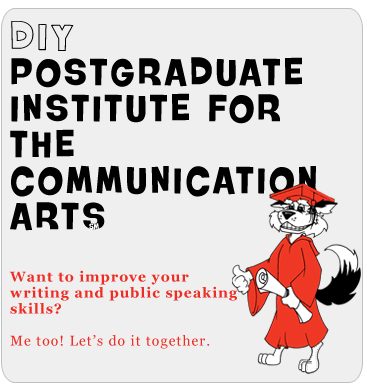“Practice does not make perfect. Practice makes improvement.”
Les Brown
“Steve Jobs believed so strongly in Apple’s products that he was not Steve when he took the stage at a product introduction. He was the product.”
Jay Elliot (Former Apple Executive and author of The Steve Jobs Way)
(The video for—The Speaking Husky Teaches Video Series, How to Overcome the Fear of Public Speaking—Part Two, is at the bottom of the post.)
I’m Back in the Saddle Again! How About You?
(Yes, I am quoting Aerosmith and probably 17,393,717 cowboys. My opinion—Rocks is Aerosmith’s best album.)
Wow! Its’s great to write a new post! I wish this wasn’t my first post this year, but it is.
Why haven’t I posted since December? There are at least three reasons why. (I hope nothing has kept those of you who love to write away from your writing.) Here are my three reasons for not posting: 1. Since July 5, 2011, I’ve had many minor to moderate Ulcerative Colitis flare ups. 2. My ADHD effects my career both positively and negatively. Specifically, I have Entrepreneurial ADHD! Because I have entrepreneurial ADHD, I relaunched my eBay Store, Rock, Read, And Roam! 3. My top priority in life is physical and emotional health, and I was as lost from that priority as someone dropped from a plane naked into the middle of Denali National Park with no food, water, or compass!
So, how’s everyone else been? (Great, I hope!) Here’s what I’ve learned—This business and this blog play a major role in my staying healthy!
I Haven’t Given a Perfect Speech. Have You?
Public speaking friends, has the perfect speech ever been given? Plain “no,” won’t suffice here. The proper answer is, “hell no!”
Why the use of the minor obscenity? Because in over 11 years of speaking in Toastmasters, hanging out with other speakers, and studying public speaking, I have learned that believing in the perfect speech generates massive procrastination and fear. How do I know this? Therapist Janet Esposito discusses perfectionism generated public speaking fear in her excellent book, In the Spotlight Overcome Your Fear of Public Speaking and Performing, and I know this because I’ve experienced it myself!
The main reason I have completed my Toastmasters Advanced Communicator Silver award but haven’t completed my Accomplished Communicator Gold Award is that I have postponed numerous speeches, because they “just weren’t good enough yet.”
You Can Prove Anything With YouTube
Here’s what I suggest you do right now—Leave this post open in your browser and open another tab. Now, faster than a politician changing positions based on the latest opinion poll, go to YouTube. Are you on YouTube now? Great! Please search for your favorite speaker and watch one entire video of your favorite presenter giving a speech. As you watch, jot down any flaws you see in the speech no matter how minor they are. (Examples: Said, “and uh,” overused his or her notes, moved around the stage to the point of distraction, lacked energy, lost eye contact for two seconds, etc.)
What did you notice was wrong? If you came up with one thing, that means the speech wasn’t perfect! (If you couldn’t find one thing, please let me know. I want to watch that speech! 🙂 )
The Greatest Business Speaker of the Last 100 Years was Flawed
For a few years, I read many cool, interesting, and groovy quotes from Steve Jobs Commencement Address to the Stanford University Class of 2005. (Yes, I was a little kid in the hippie era. 🙂 ) I found Steve’s speech amazing and inspiring, but never bothered to watch it. When I finally watched the speech, I felt like some bizarre character in an X-Files episode had transported me to an alternate universe. No, way! That’s, Steve Jobs, one of my favorite speakers reading a speech? Based on what I thought a great speech was at the time, Steve’s, awesome, amazing, cool, and inspiring speech was flawed! This meant that everything I believed about reality was a lie…
Jobs 2005 speech at Stanford is one of my favorite speeches. The speech motivated and inspired me. The speech also showed me that a presentation didn’t have to meet my definition of perfection to be a great speech and change many lives for the better! I believe that speech will be the catalyst that causes many of us to live the life we were created for instead of the life that the neighborhood we grew up in, our parents, our friends, etc. believe we were created for!
Why would the awesome speaker Jobs read his speech? Maybe, he was as horrified as Jamie Leigh Curtis being chased by Michael Myers in the first Halloween movie! Is it possible that the ultra cool Steve Jobs felt fear in front of an audience?
How could the legendary great presenter Jobs be afraid of making a speech at Stanford? Maybe, because he was out of his element. Maybe, his level of fear wasn’t anything out of the ordinary, but his busy schedule had kept him from rehearsing the speech. Maybe, he felt that each word of that inspiring speech was so important that his best option was to read the speech. Ultimately, it doesn’t matter why he read the speech… Now, here’s what’s most important—
Jay Elliot, former Apple executive and author of the Steve Jobs way, says that when Steve made a speech, he wasn’t Steve, he transformed from being Steve into being an iPod, iPhone, or an iPad. Mr. Elliot says that Mr. Jobs believed so strongly in Apple’s products that he was not Steve when he took the stage at his legendary product introductions. He was the product. I believe this is another way of saying what Janet Esposito says in her most awesome book In The Spotlight Overcome Your Fear of Public Speaking. Ms. Esposito believes that one of the best things we can do to overcome speech anxiety is to focus 100% on the needs of the audience during our presentations.
A Few More Things…
Here’s a few other things in The Speaking Husky Teaches Overcoming the Fear of Public Speaking Part Two:
I hope that Part Two of The Speaking Husky Teaches Series, How to Overcome the Fear of Public Speaking, helps you alleviate some of the fear and anxiety you feel before you make a presentation. If you’ve benefited from this post or this video, please consider sharing them with someone else. I’d love your feedback. I know I’m a video amateur! (Your thoughts about my presentation(s), my writing, my videos, and my blog will be very welcome.)
Thanks for your support! 🙂 Thanks for stopping by!

{ 0 comments }











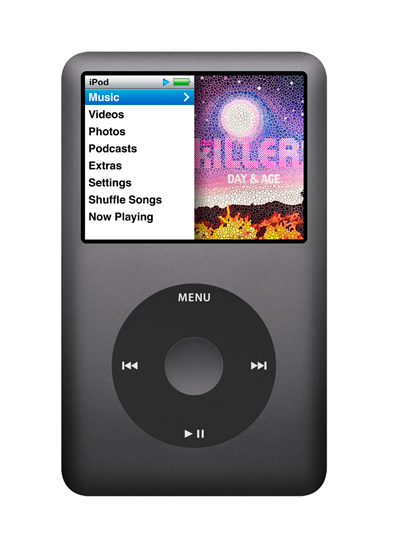
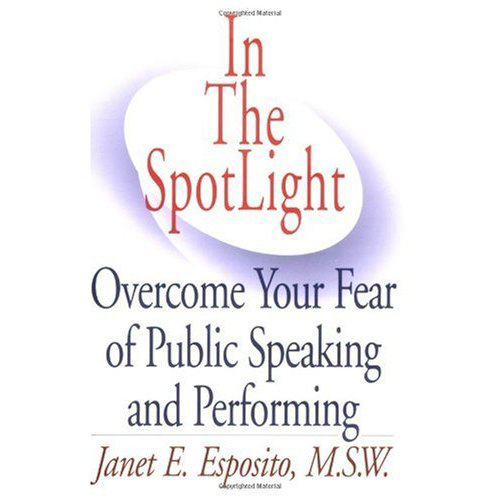



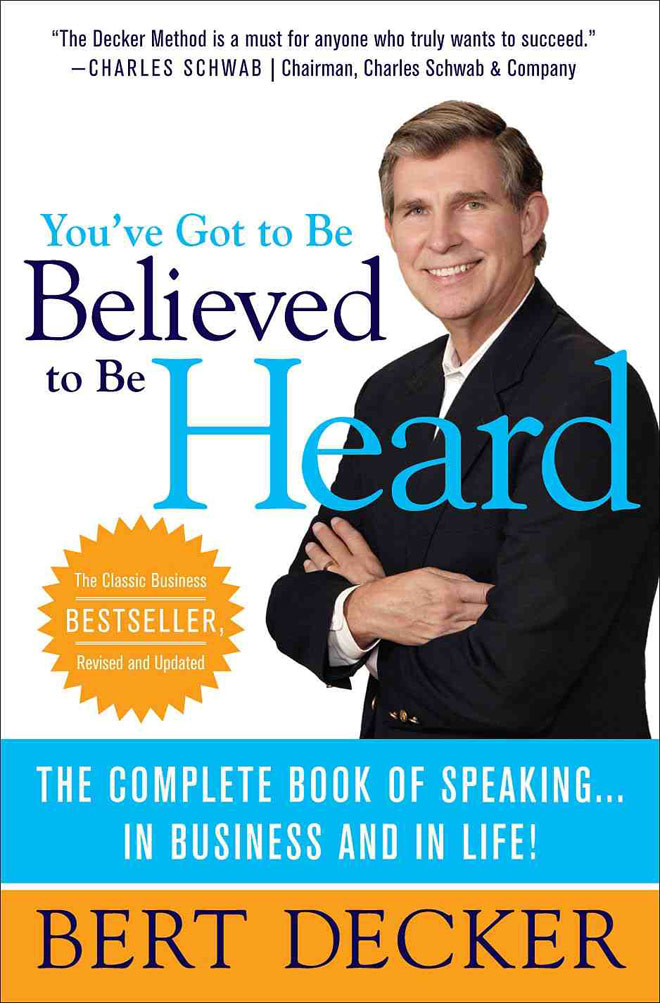
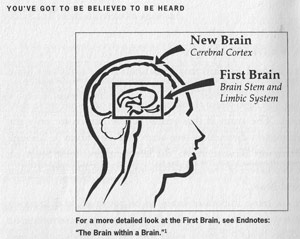


 RSS
RSS Email
Email


